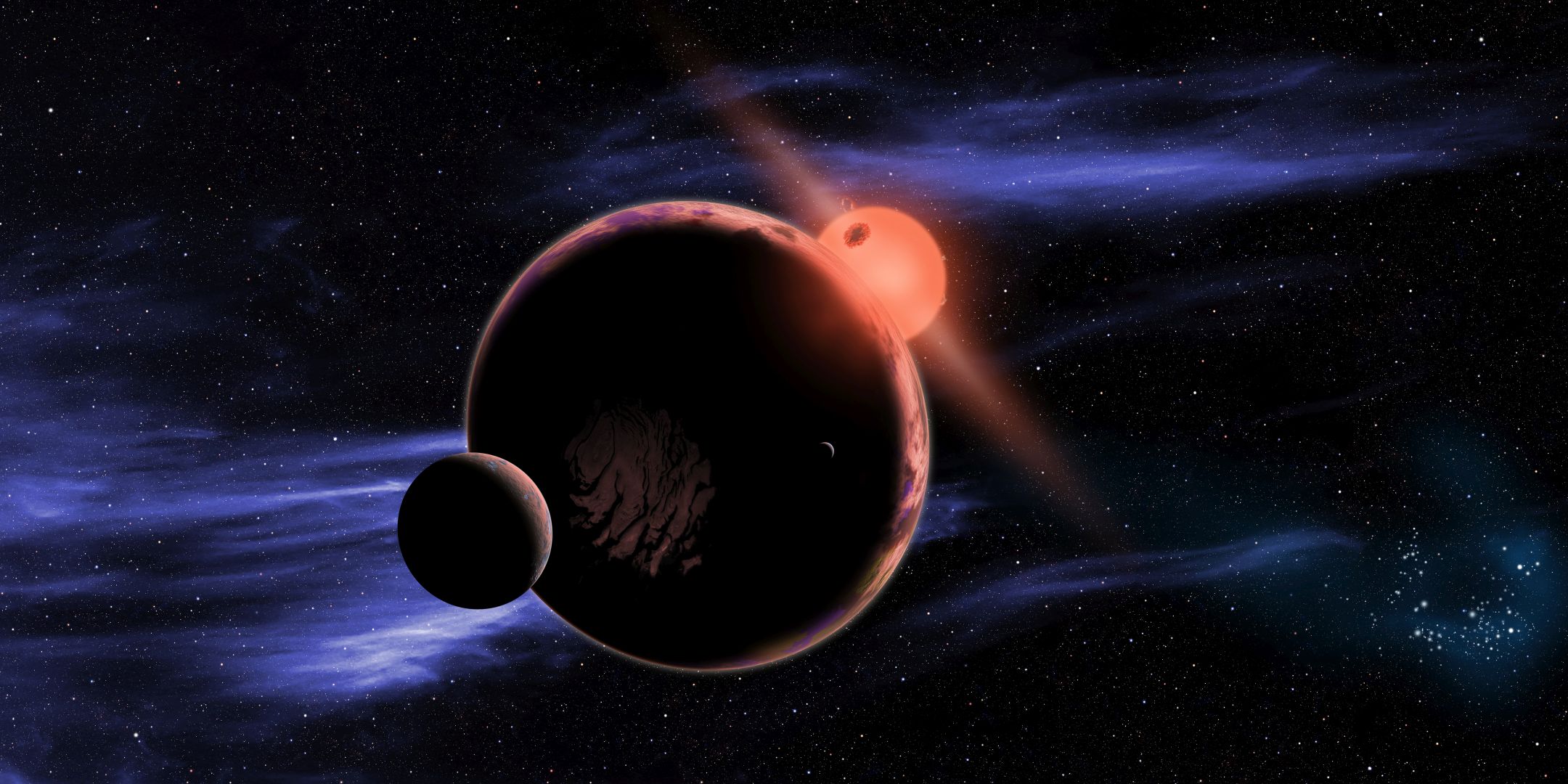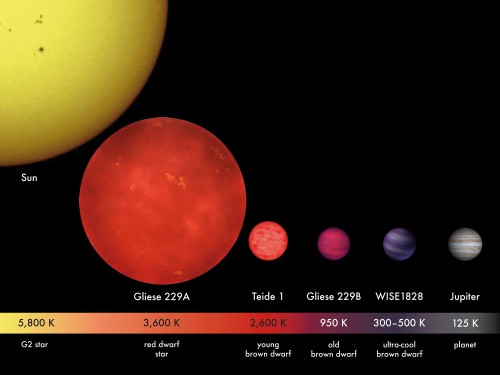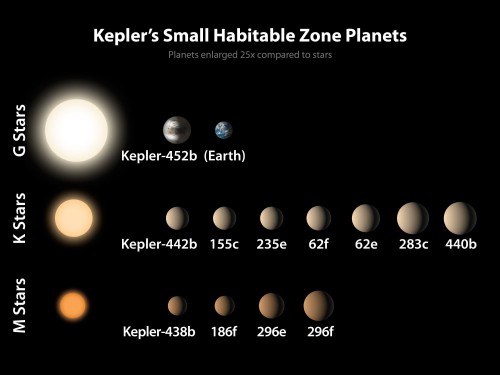
The history of the search for life in the Universe is characterised by the search of Earth-analog conditions where “life as we know it” could form and evolve. That search has mainly focused on two key characteristics: the detection of terrestrial, Earth-like worlds around Sun-like stars. However, much theoretical work conducted in recent years has indicated that stars very different from the Sun, like red dwarfs, also have the potential—as unlikely as it may seem—to harbor habitable planets of their own.
Even though red dwarf stars are the most abundant stellar population in the Milky Way galaxy, possibly comprising up to 80 percent of the galaxy’s total number of stars, they had systematically been ignored for years by astronomers in their search for exoplanets. With masses and sizes ranging from approximately 1/10th to 1/3rd that of the Sun and a metallicity (abundance in chemical elements heavier than hydrogen and helium) substantially lower than that of Sun-like stars, red dwarfs were seen as very poor candidates for forming and maintaining any exoplanetary systems. In addition, the lower luminosity of red dwarf stars made them very difficult targets for study.
These properties of red dwarf stars made the search for any habitable planets around them seem like a futile exercise. With surface temperatures ranging between 2,500 to 4,000 K and a luminosity between 1/10,000th to 10 percent that of the Sun, red dwarfs were considered just too dim for harboring any life-friendly planets. Furthermore, the habitable zones around red dwarfs lie very close to these stars. Any possible orbiting planets would probably end up being tidally locked, with one hemisphere constantly facing the star and the other constantly buried in eternal darkness. In addition, red dwarfs themselves are also very active, especially during the first couple billion years of their lives, regularly shooting off large solar flares while bathing their surroundings with large doses of lethal ultraviolet radiation.

Yet the advent of exoplanetary research during the last two decades has gradually revealed a multitude of planets and planetary systems, many of them around red dwarf stars, leading scientists to calculate that there might be indeed billions of exoplanets in the Milky Way, many of which are potentially habitable, orbiting these previously neglected, inconspicuous stars. A growing body of theoretical studies in recent years has focused on just such a possibility, prompting astronomers to put red dwarf stars back into the list of potential targets in the search for potentially habitable planetary systems and life. Now, a new research undertaken by a team of astronomers at the University of Washington comes to reinforce this notion, by showing that terrestrial exoplanets in eccentric, non-circular orbits around red dwarfs could harbor strong internal magnetic fields, which could help to sustain and protect any kind of life that might have arisen on their surfaces from the deadly effects of the host stars’ ultraviolet radiation and intense solar flare activity.
The presence of a strong magnetic field around a planet that lies inside its host star’s habitable zone (the range of orbital distances from the star where the planet can maintain liquid water on its surface) is one of the major key prerequisites for the emergence of life. For instance, the Earth’s magnetic field helps to deflect most of the hazardous ultraviolet radiation and the charged particles of the solar wind that stream from the Sun which would have otherwise rendered the surface of our home planet inhospitable. The Earth’s magnetic field is generated mostly by the swirling motion of molten iron in its outer core. The latter motion produces an electrical current which in turn creates our planet’s magnetic field. This mechanism has been maintained throughout most of the Earth’s history by the continuous release of heat from the solid inner core outward toward the surface, as our planet slowly cools following its formation 4.5 billion year ago.
A major source of internal heat that can drive the creation of a magnetic field as well is through the proper rate of tidal heating, according to a new study that was recently published at the Astrobiology journal by Peter Driscoll and Rory Barnes, both at the University of Washington’s Astronomy Department. Tidal heating is caused by friction inside a celestial body like a planet or moon, as the latter is constantly stretched by varying tidal stresses from another celestial body like a neighboring star or planet respectively. A dramatic display of this phenomenon can be observed on Jupiter’s moon Io. The latter’s interior is actually melted by the great tidal friction forces that are caused by the presence of the nearby gas giant. This results in Io being the most actively volcanic body in the Solar System, with the moon’s molten interior finding its way to the surface through the dozens of volcanoes that have been discovered there.
Driscoll and Barnes set out to explore in their study the role of just such tidal heating processes on planets orbiting inside the habitable zone of red dwarf stars. Since red dwarfs are much smaller and dimmer compared to the Sun, their habitable zones also lie very close to these stars, in orbital distances that are smaller than that of Mercury from the Sun in our Solar System. Even though it had been previously established that any planet in such close distances around red dwarf stars would probably end up being tidally locked, the researchers wanted to see what effects these stars’ gravity would have on any such worlds on eccentric, non-circular orbits. “The question I wanted to ask is, around these small stars, where people are going to look for planets, are these planets going to be roasted by gravitational tides?” says Driscoll.
To that end, the researchers combined previous tidal dissipation, thermal, and orbital evolution models in order to test the evolution of terrestrial, Earth-like planets around red dwarf stars with varying masses, from 0.1 to 0.6 times that of the Sun. The results of their simulations showed that naturally any planet located closer in highly eccentric orbits experienced the most severe tidal stresses which would most probably result in very high temperatures and extreme volcanic eruptions on their surfaces, making such worlds largely inhospitable to life. Furthermore, the simulations showed that tidal stresses were higher on planets around the lowest-mass red dwarf stars (in the order of 0.1 times the mass of the Sun). These higher tidal forces would quickly circularize the orbits of these planets within a few billion years, at a point where they would reach a tidal steady state that would rapidly cool their interiors, thus prohibiting the generation of a global magnetic field.

Yet, more importantly, any planet inside the habitable zone of slightly larger red dwarf stars with a mass approximately 0.4 times that of the Sun would experience a smaller tidal heating, which would allow it to reach an Earth-like internal temperature range and heat dissipation rate for a sufficient amount of time. Such worlds would be perfectly capable of generating a strong magnetic field which could protect them from deadly stellar irradiation for billions of years, thus providing life-friendly conditions on their surfaces. “In summary, tides are more influential around low mass stars,” write Driscoll and Barnes in their study. “For example, planets around stars with 0.2 solar masses, experience a tidal runaway greenhouse [effect] for 1 billion years and would be tidally dominated for 10 billion years … We find a threshold at a stellar mass of 0.45 times that of the Sun, above which the habitable zone is not tidally dominated. These stars would be favorable targets in the search for geologically habitable Earth-like planets as they are not overwhelmed by strong tides.”
Overall, the work by Driscoll and Barnes showed that, under the right conditions, terrestrial exoplanets around red dwarf could create and maintain their own magnetic fields as well, through the right amount of tidal forces and heat dissipation. “I was excited to see that tidal heating can actually save a planet in the sense that it allows cooling of the core,” says Driscoll. “That’s the dominant way to form magnetic fields.”
As promising as these results may be, however, the researchers are quick to point out that much work is needed for astronomers to better characterise the potential for habitability of such exoplanets. For instance, this new study has focused mostly on one planet systems, without taking into account the tidal effects of orbital resonances with any neighboring planets. As scientists focus more on red dwarf stars in their search for potentially habitable exoplanetary systems, more detailed study will be required regarding the thermal and orbital evolution of such systems. “The thermal history of a planet is critical to its habitability,” write Driscoll and Barnes. “Mantle temperature determines the rates of melting, degassing, and tectonics, while the thermal state of the core is critical to the maintenance of a planetary magnetic field that shields the surface from high energy radiation … With growing interest in the habitability of Earth-like exoplanets, the development of geophysical evolution models will be necessary to predict whether these planets have all the components that are conducive for life.”
Either way, if these latest results are any indication, then the Milky Way’s dim and previously overlooked population of red dwarf stars (which is the largest stellar population in the galaxy) might prove to be the most important player in the search for life.
Want to keep up-to-date with all things space? Be sure to “Like” AmericaSpace on Facebook and follow us on Twitter: @AmericaSpace




So many wonders and so little time.